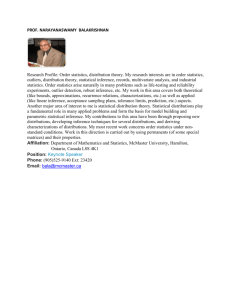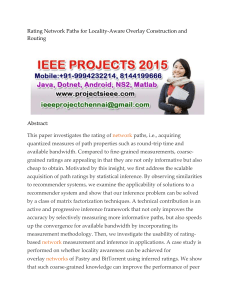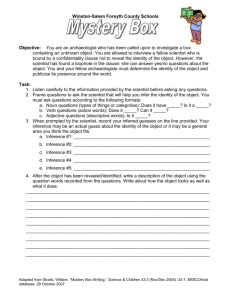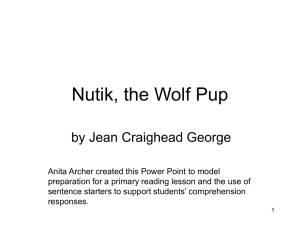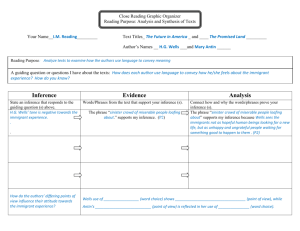Notes from Oct. 19
advertisement
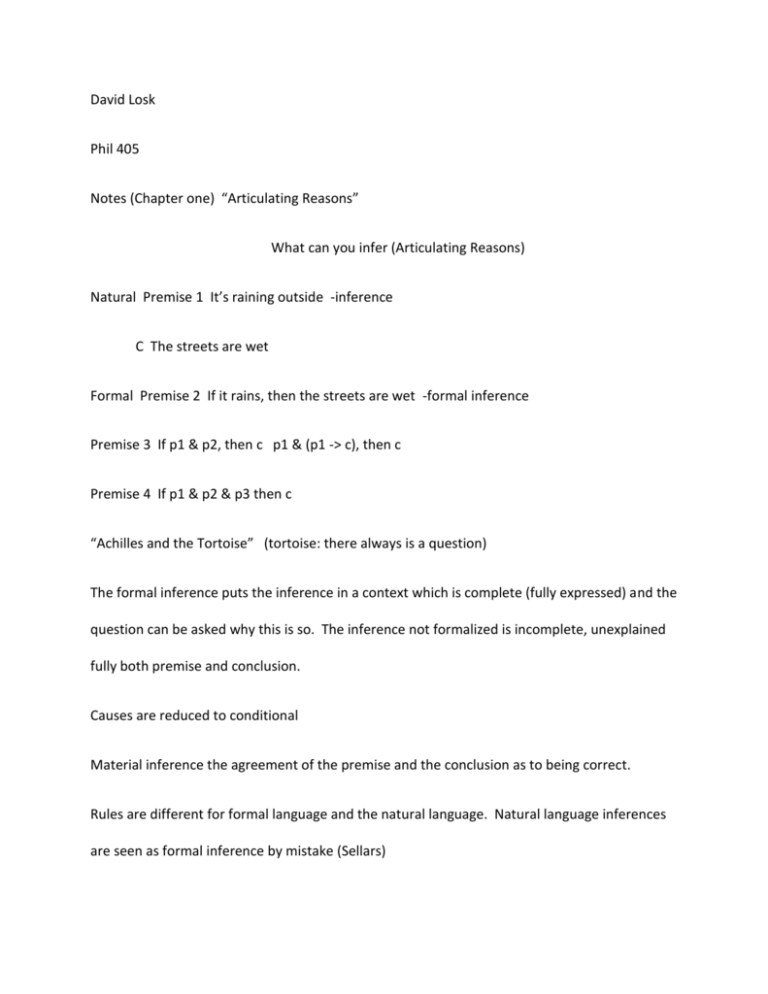
David Losk Phil 405 Notes (Chapter one) “Articulating Reasons” What can you infer (Articulating Reasons) Natural Premise 1 It’s raining outside -inference C The streets are wet Formal Premise 2 If it rains, then the streets are wet -formal inference Premise 3 If p1 & p2, then c p1 & (p1 -> c), then c Premise 4 If p1 & p2 & p3 then c “Achilles and the Tortoise” (tortoise: there always is a question) The formal inference puts the inference in a context which is complete (fully expressed) and the question can be asked why this is so. The inference not formalized is incomplete, unexplained fully both premise and conclusion. Causes are reduced to conditional Material inference the agreement of the premise and the conclusion as to being correct. Rules are different for formal language and the natural language. Natural language inferences are seen as formal inference by mistake (Sellars) Bob says confirming the antecedent is a rule of inference. The rule is defined by the definition of the If and Then, with the definition, will allow you to follow the rules of logic Bob says: Inference from which meaning flows is the engagement in reasoning or the act of reasoning. The formalist approach to inference replaces the material inference of the natural language or”primitive goodness of inference for truth of conditionals” Bob’s view is, different than Sellars, the material inference is not incomplete and if its correctness is implicit using the “Socratic method” formally you should be able to make explicit your proposition. Implied: this can be done with the richness of the natural language and the articulation of reason Introduction rule – “Set of sufficient conditions for asserting it” Elimination rule – “Set of necessary consequences of asserting it” (what follows from doing so) The rules of if, then, conditionals and antecedent can infer consequence. Negation in language – something not being the case and committed to it can be called a sentential operator such as: It’s (not) dark. Bob – logical vocabulary - it sets up these kinds of relationships among propositions, prior relationships to make explicit what was implicit Primacy rule – formal logic is not prior, makes explicit what was implicit To know a meaning of a term- you should know what follows from that term (from affirming it) Language game is logical to non-logical- what does it take to give it meaning. Verification and ascentability conditions- what must be obtained to be able to ascend Consequence conditions - verificationists dwell on the verification and ascentability conditionsfocus on downstream application. Kids learn first when to say something (the entry and exit moves) then next they learn what is embedded in it (meaning). One would think Bob is saying we have potential if we follow the rules and our natural language is up to providing the necessary tools and the theory for knowledge Pragmatist – understand affirmation and denials of a concept Consequences of affirming Consequences of denying


